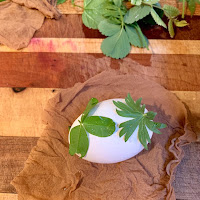January 2024
TK/K: The Skin You Live In: Self Portrait
How Many Colors Are There in the Human Rainbow?
Visual arts are a wonderful, organic way to engage our students in conversation about skin colors, self love, respect for others, race and diversity. Students engaged in a self-study about their skin color and the skin of their peers, family and community. The culminating end product was a self-portrait featuring student’s personal skin colors.
The book "The Skin You Live In" written by Michael Tyler, illustrated by David Lee Csicsko was a great introduction for students to share observations about their skin. After the read- aloud, students painted with watercolors creating color recipe charts to mix their own skin tones and used creative words to name and describe their skin colors. Students painted one entire page with their skin tone and wrote their creative names of their skin color on the page.
Students continued the study of their skin by contemplating the question: “How many colors are there in the human rainbow?” By artist Angélica Dass’ count, at least 4,000. Since 2012, the Brazilian artist has been photographing people of every color and matching each subject’s skin tone to hues from the Pantone printing color chart to codify a unique chromatic inventory.
Dass’s project, titled “Humanæ,” has traveled the world and is featured in National Geographic. The project focuses on the idea of race as a social construct, rather than a biological one.
Inspired by Dass’ work students drew and layered their self-portraits on top of their skin color paper. Students studied basic facial proportions and facial features leaving room for personal expression and details. Students used art media of their choice such as watercolor, marker, color pencil and crayons to paint hair, eye and lip colors.
1st GRADE: Nōtan Black and White Compositions
Nōtan (pronounced no-tan) is a Japanese term that means 'light and dark harmony/balance.' It's a design concept that looks at how light and dark elements of a composition interact only using black and white.
First grade students were introduced to the achromatic shades and tints; black and white. Practicing scissor cutting skills students enjoyed the process of placing light and dark elements next to the other creating stunning imagery and compositions.
2nd GRADE: Family Portrait inspired by Todd Parr
Students were introduced to the local author and illustrator Todd Parr. He is the author and illustrator of more than 60 books for children, including the New York Times bestselling The I Love You Book, The Earth Book, and The Thankful Book. He has inspired, empowered, and entertained millions of children around the world with his bold images, unique sense of humor, and inclusive storytelling.
Second grade students read The Family Book and shared their connections with the book. Some families look alike, some families like to eat different things, some families like to hug each other, some families have two moms or two dads, some families are noisy, some are quiet.
Students portrait their family in a simple cartoon style like Todd Parr. Students added clues and selected colors to personalize each of their family members.














Comments
Post a Comment